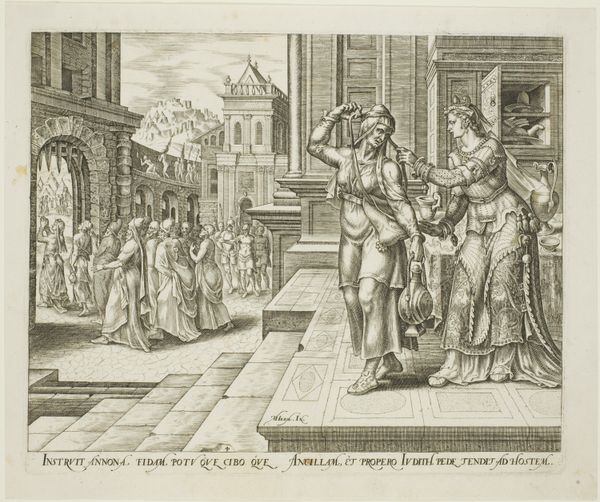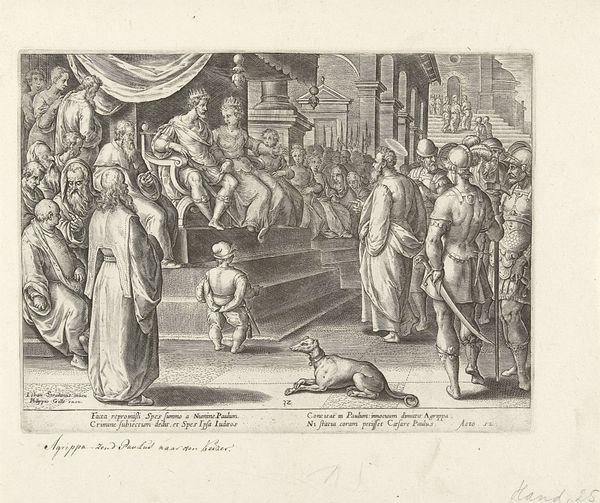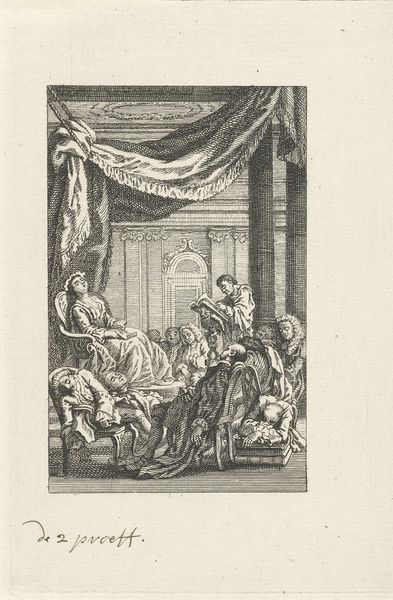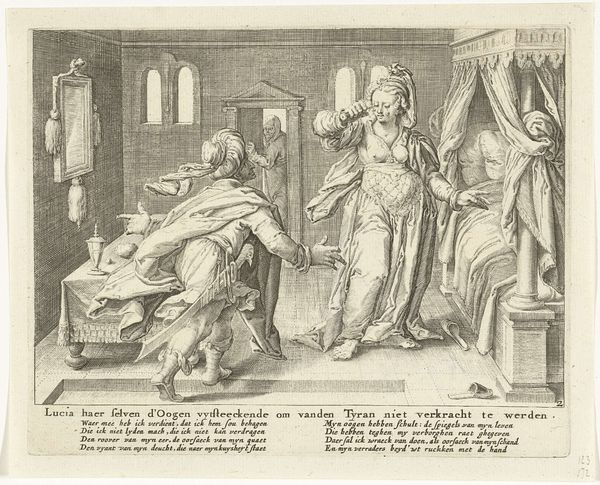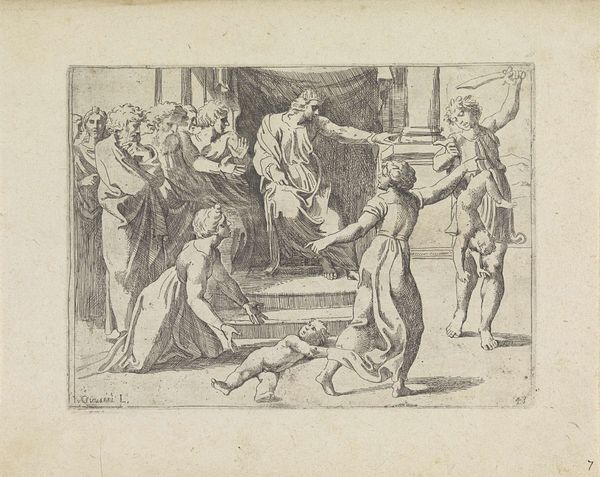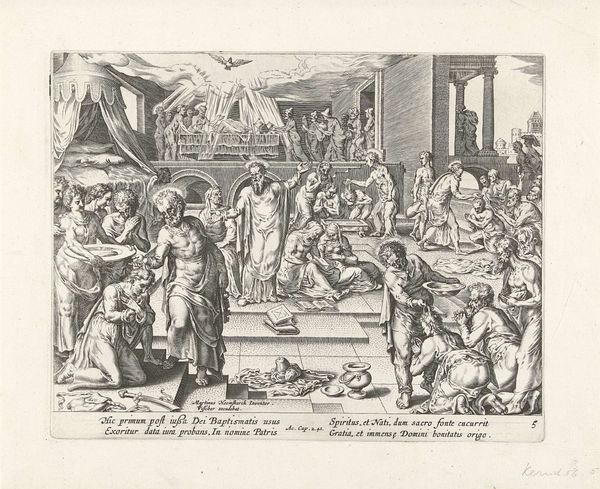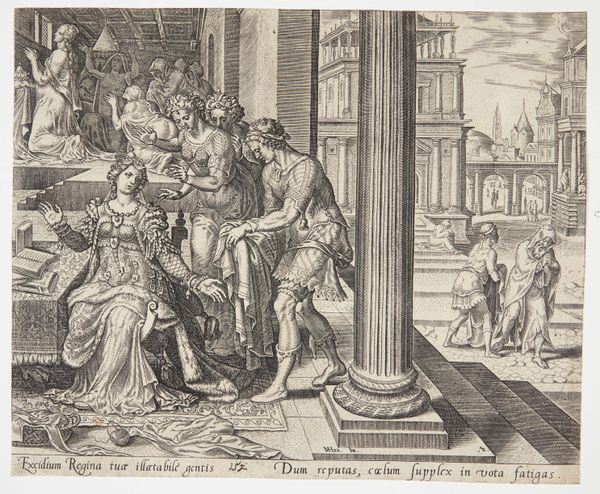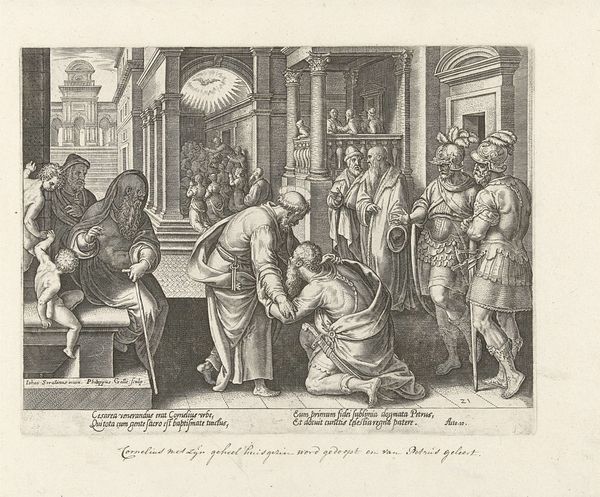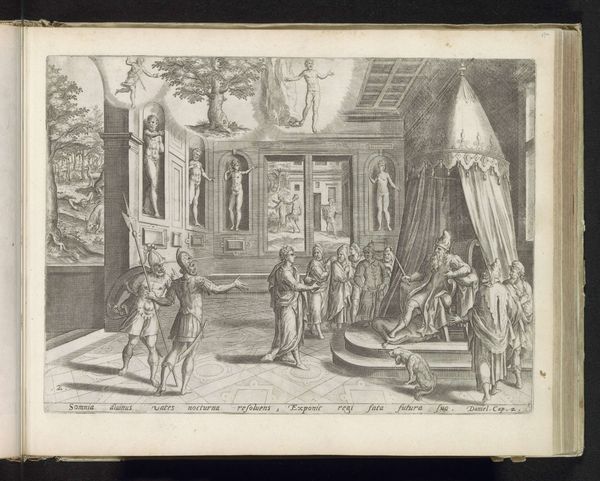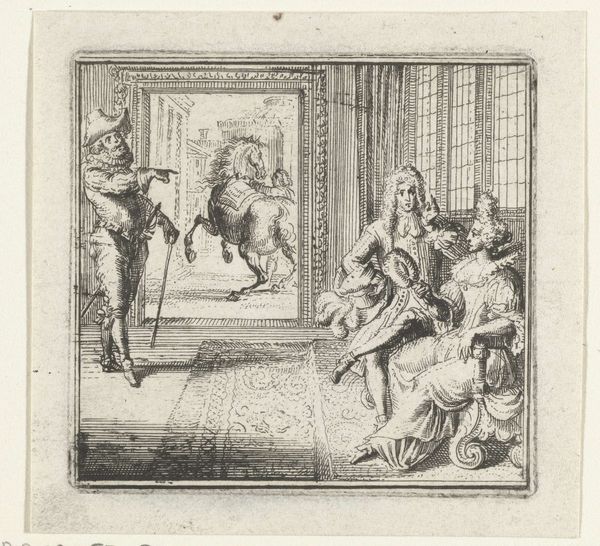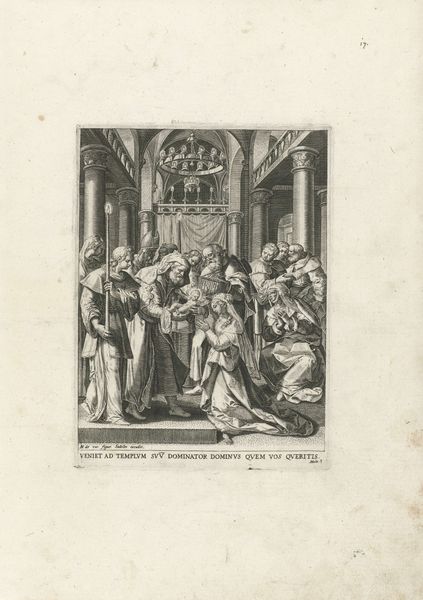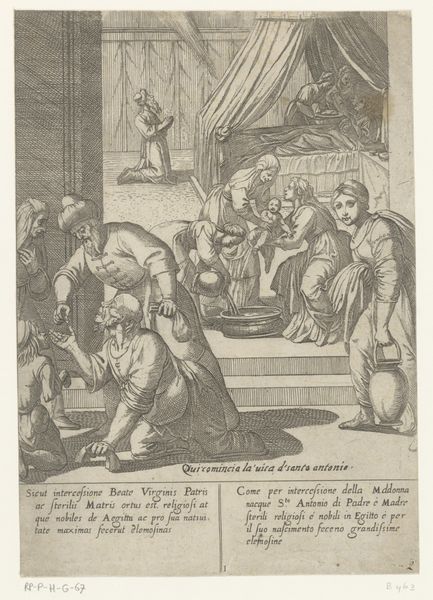
print, engraving
#
narrative-art
# print
#
pen sketch
#
old engraving style
#
perspective
#
mannerism
#
figuration
#
history-painting
#
academic-art
#
engraving
Dimensions: height 213 mm, width 272 mm
Copyright: Rijks Museum: Open Domain
Curator: I’m drawn in immediately by the architecture in this print. It feels grand, a little intimidating, maybe? All those columns reaching upward. Editor: And you're right to notice that. What we have here is "Petrus geneest een verlamde," or "Peter healing a paralytic," an engraving dating to 1582. The piece, now held at the Rijksmuseum, is by Philips Galle, after a design by Maarten van Heemskerck. Curator: Oh, Heemskerck! So that explains the drama! He loved those sweeping architectural settings and figures that almost burst out of the frame with emotion. But tell me more—paralytic? What story are we seeing unfold? Editor: The engraving depicts the biblical account of Saint Peter healing a man who had been paralyzed for many years. The architecture frames the event, highlighting the power of faith and divine intervention against the backdrop of human suffering and institutional grandeur. Notice the perspective—how Galle uses depth to guide the eye to the background figures, enhancing the scene’s theatrical quality. Curator: It's almost overwhelming, isn't it? So much detail, from the ornate columns to the expressive faces of the crowd. I can't help but focus on the contrast – that central figure being healed practically leaps out in clarity compared to the pen sketches of onlookers. Editor: A formal analysis reveals Galle’s mastery of engraving. He plays with light and shadow to create depth and volume. There is also the Mannerist influence; consider the elongated figures and the somewhat exaggerated poses. Curator: It gives the whole scene this energy. The architecture may ground the scene, but the style keeps your eye bouncing around. Editor: Precisely. Through meticulous lines, he builds a bridge between a historical narrative and an artistic interpretation. Curator: Looking closer now, there’s a verse written underneath; does that offer more context to Galle’s motivations? Editor: It does. It’s a poetic summary of the healing, reinforcing the message that faith and divine power can overcome physical limitations and restore vitality. The combination of text and image was crucial to communicating religious and moral ideas during this era. Curator: You’ve shown me the importance of depth, drama and perspective to a piece I simply didn’t notice upon first seeing this engraving. Thanks for your perspective on perspective! Editor: It was a pleasure delving into this engraving’s many qualities! A closer look helps uncover meanings we otherwise miss.
Comments
No comments
Be the first to comment and join the conversation on the ultimate creative platform.

